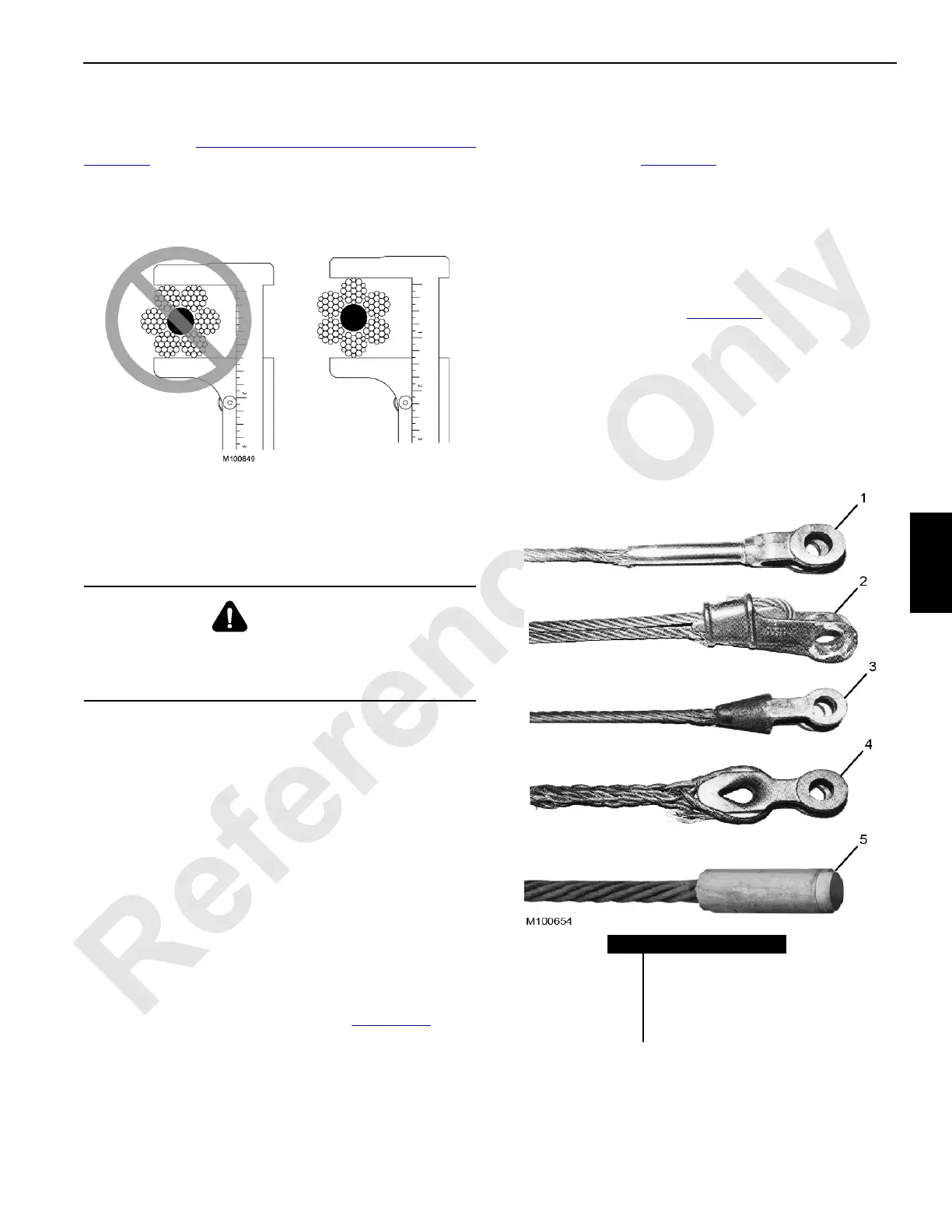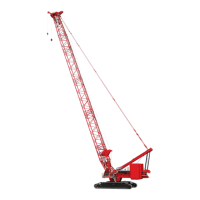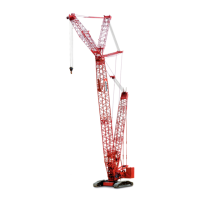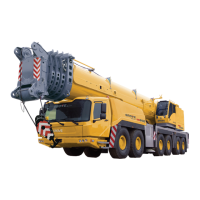Manitowoc Published 11-22-17, Control # 257-02 5-49
MLC300 SERVICE/MAINTENANCE MANUAL HOISTS
New Wire Rope—After initial loading, measure and record
the diameter of any new wire rope for comparison to future
inspections (see Maintain a Wire Rope Condition Report on
page 5-46).
The wire rope must be taken out of service when the
reduction from its nominal diameter is more than 5 percent.
Broken Rope Wires
When conducting the periodic comprehensive inspection,
thoroughly clean the wire rope so breaks can be seen. Relax
the rope, move it off “pick-up points,” and flex it as much as
possible. Use a sharp awl to pick and probe between the
wires and strands, lifting any wire which appears loose or
moves excessively. Do not open strands of rotation-resistant
rope.
Wire breaks are typically at the crown of the strands—the
area that contacts the sheave or drum when a load is picked
up. Breaks at the crown will appear as small gaps in a wire.
In comparison, when wires in the valley of a strand break, the
broken ends will rise up and are easier to notice.
NOTE: The daily inspection does not require that the rope
be cleaned or probed.
The wire rope must be taken out of service when it has the
following number of broken wires (see Figure 5-29
for an
explanation of lay length):
• Running Ropes—Six randomly broken wires in one lay
length or three broken wires in one strand in one lay
length.
• Standing Ropes (pendants)—More than two broken
wires in one lay length in sections beyond the end
attachment, or more than one broken wire at the end
attachment (see Figure 5-28
).
• Rotation-resistant rope—Two randomly distributed
broken wires in six-rope diameters or four randomly
distributed broken wires in 30-rope diameters.
• All ropes—One outer wire broken at the point of contact
with the core and protruding or looping out of the rope
structure. Additional inspection is required.
• End attachments (see Figure 5-28
)—When more than
one broken wire appears at the attachment, replace the
rope or cut off the affected area and reattach the fitting.
NOTE: For galvanized bridle strand wire rope pendants,
United States Steel states, “Replacement criteria
for galvanized strand boom suspension pendants
are 25 percent of the outer wires fractured, or 10
percent of the total numbers, whichever comes
first.”
WARNING
Falling Load Hazard!
A broken wire indicates a weakened wire rope. Replace
wire rope when more than one broken wire appears.
Incorrect
Correct
Measuring Technique
FIGURE 5-27
Item Description
1 Swagged Socket
2 Wedge Socket
3 Poured Zinc Socket
4 Hand-Spliced Socket
5 Button Socket
FIGURE 5-28
